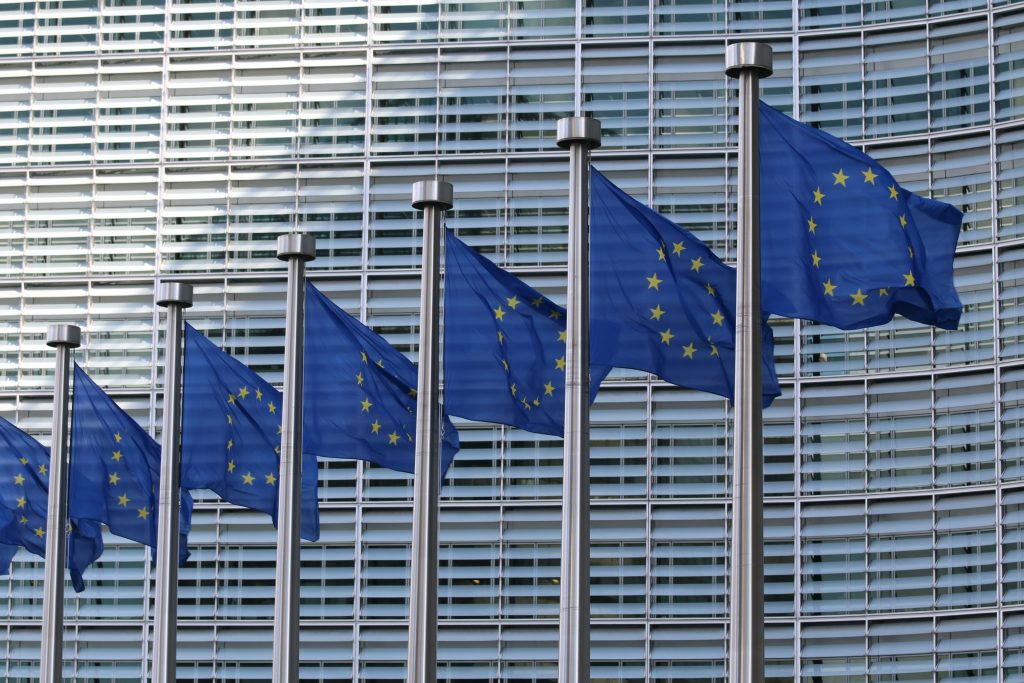Europe needs a Green Deal that can meet the moment
Michał Kurtyka is a distinguished fellow with the Atlantic Council Global Energy Center. He served as Poland’s first minister of climate and environment, and as COP24 president. This essay is part of the Global Energy Agenda.
Europe is at a crossroads. War has returned to the continent and the global economic order is unraveling, evidenced by the decoupling of cross-border supply chains and a resurgence of national industrial policies. As the European Union (EU) grapples with this upheaval, it must confront a new geopolitical paradigm.
Energy is central to this equation—and has been since the beginning of the European project and the creation of its Coal and Steel Community in 1951 as well as the Euratom Treaty signed in 1957. Then, as now, energy was vital for Europe’s security and prosperity. However, with both being challenged today and with European Parliament elections approaching in June 2024, a new commission must again find a way to realize Europe’s dream. Europe’s ability to prosper in an increasingly competitive and destabilized world is at stake—as is Europeans’ commitment to continental integration.
The European Green Deal is emblematic of this commitment and vital for achieving Europe’s ambitions. But it must be reframed not simply as a climate plan, but as an initiative with economic security and competitiveness at its core. To do so, Europe must ask itself two simple questions: how it will grow its economy, and what energy sources should fuel that growth?
The war in Ukraine shows that Europe’s energy system is torn between two paradigms: a conventional one, based on fossil energy, and an alternative model, based on renewables. The failure of conventional energy—dominated in Europe by Russia—to provide economic security and competitiveness is evident. However, the renewables paradigm cannot provide security of supply and economic competitiveness either—first and foremost because Europe is reliant on others for these technologies, but secondarily, because of inherent intermittency of weather-dependent energy sources. In Europe’s efforts to secure and decarbonize its economy, it holds none of the cards to do so.

The war in Ukraine shows that Europe’s energy system is torn between two paradigms: a conventional one, based on fossil energy, and an alternative model, based on renewables.
Europe’s pursuit of energy security and decarbonization objectives requires three major levers exist. Not one is “Made in Europe.”
The first—perhaps counterintuitive—lever is gas. The twin ascendancies of shale and liquified natural gas (LNG) led to the biggest geopolitical revolution of the twenty-first century. They reduced the leverage of pipeline gas suppliers while pricing out coal in the United States and many developing countries. While LNG reduces Europe’s dependence on both Russia and coal, this lever is decidedly “Made in America.”
The second, more obvious lever is renewable power. While renewables reduce both emissions and the power of fossil fuel exporters, that clout has gone elsewhere. Seventy-six percent of all lithium-ion battery cell production, seven out of ten best-selling electric vehicles, and soon 95 percent of solar photovoltaic manufacturing all come from one country—this lever is “Made in China.” That may change under the United States’ Inflation Reduction Act (IRA). In either case, European renewable energy autonomy remains elusive.
The third lever—and most controversial one, at least in Europe—is nuclear energy. This powerful decarbonization tool remains underutilized in the West, but not in the East. Russia is the world’s leading nuclear technology and fuel exporter, and China is rapidly catching up. While Europeans debate nuclear energy’s role in their energy transition among themselves, the prospects for this source of power to be “Made in Europe” languish.
Europe is stuck in the middle of three conventional and alternative energy powers. It lacks the oil and gas resources of the United States or Russia. And it does not possess the industrial materials or manufacturing capabilities of China, while its energy crunch renders European industry increasingly uncompetitive. Europe also lacks significant capabilities in nuclear power, thanks largely to the political choices of a few member states that impede a unified approach.
Europe must ask itself two simple questions: how it will grow its economy, and what energy sources should fuel that growth?
Europe so far has been unable to put forward a credible alternative to the IRA or Chinese industrial policy due to insufficient coordination and lack of fiscal firepower behind its push for net zero. Europe is not lacking resources: nearly €800 billion was committed last winter to shield industries and consumers against rising fossil fuel prices; its members states’ combined spending on renewables is greater than that of the United States’ as a percent of total gross domestic product. But its climate and industrial objectives are structurally disconnected. And both the US and Chinese examples show that when climate objectives are aligned with well-funded industrial policy, they can deliver astonishing results.
Chinese industrial policy has cemented the country as the dominant force in the global clean energy supply chain. In the United States, the IRA is diversifying that supply chain and creating a boom for cleantech manufacturing and related sectors. As of August 2023, the law has been responsible for more than 170,000 jobs attached to 272 clean power projects and is projected to create 9 million total jobs over the next decade.
Europe risks being left behind if it does not take swift action to ensure its energy future is “Made in Europe” where necessary, and “Made with Europe” where possible, stabilizing and encompassing its neighborhoods and trade partners. To do so, it must create a compelling complement to the IRA and create the fiscal space to finance it. This requires renewed European leadership and a clear vision on energy security and its vital role in the future of Europe.
All essays
Related program

The Global Energy Center develops and promotes pragmatic and nonpartisan policy solutions designed to advance global energy security, enhance economic opportunity, and accelerate pathways to net-zero emissions.
Image: EU flags flying outside the European Commission building (Credit: Guillaume Périgois, Unsplash)

